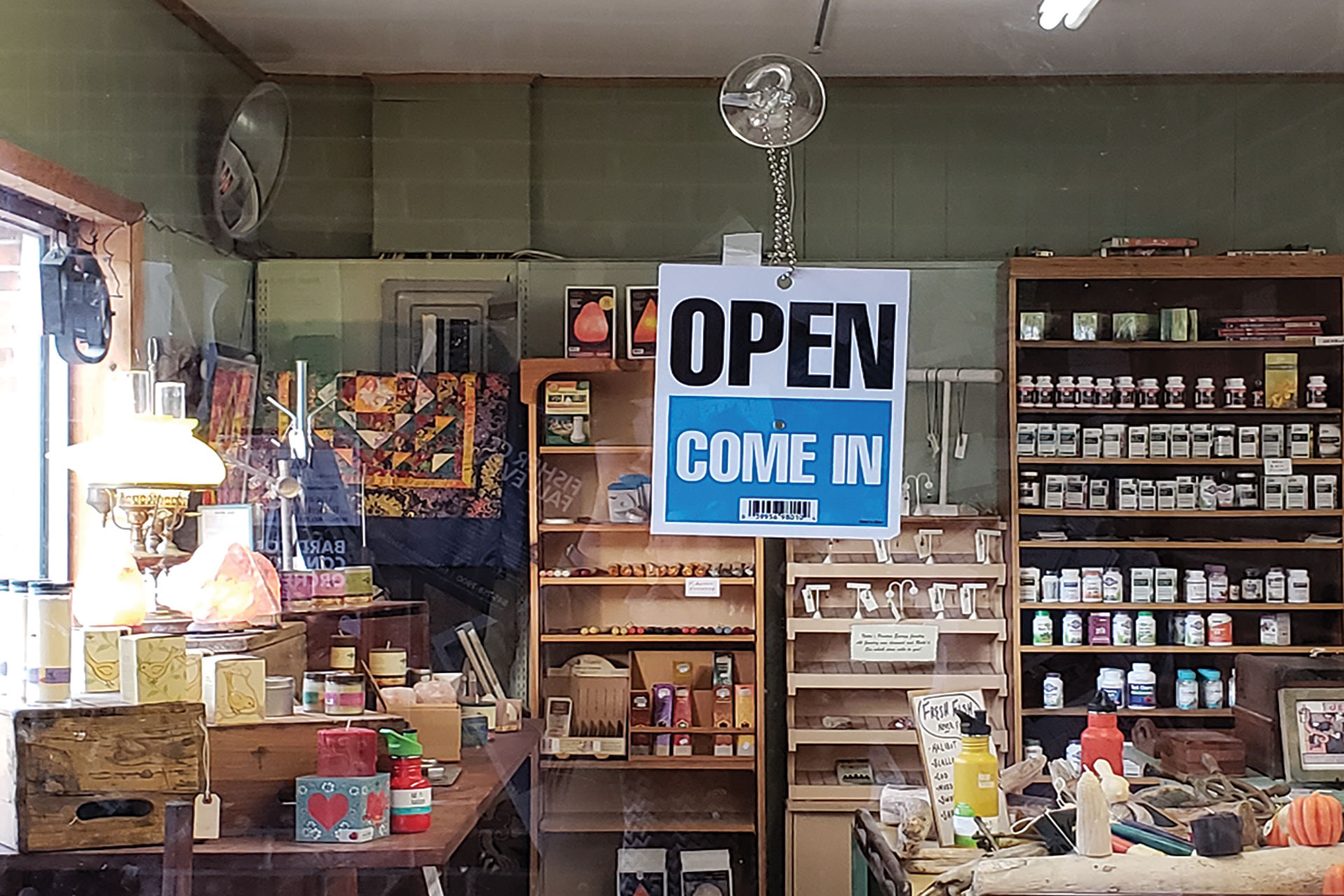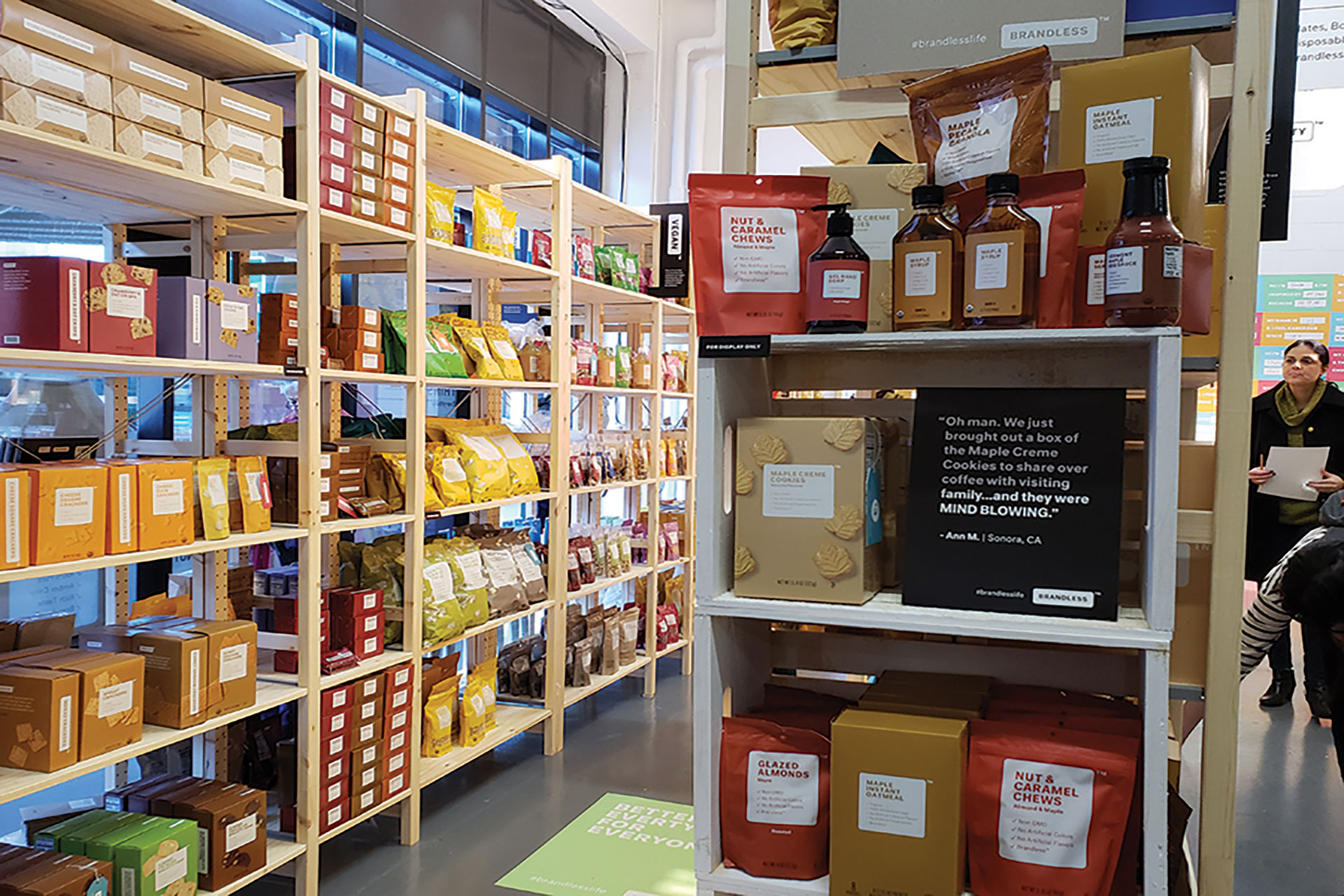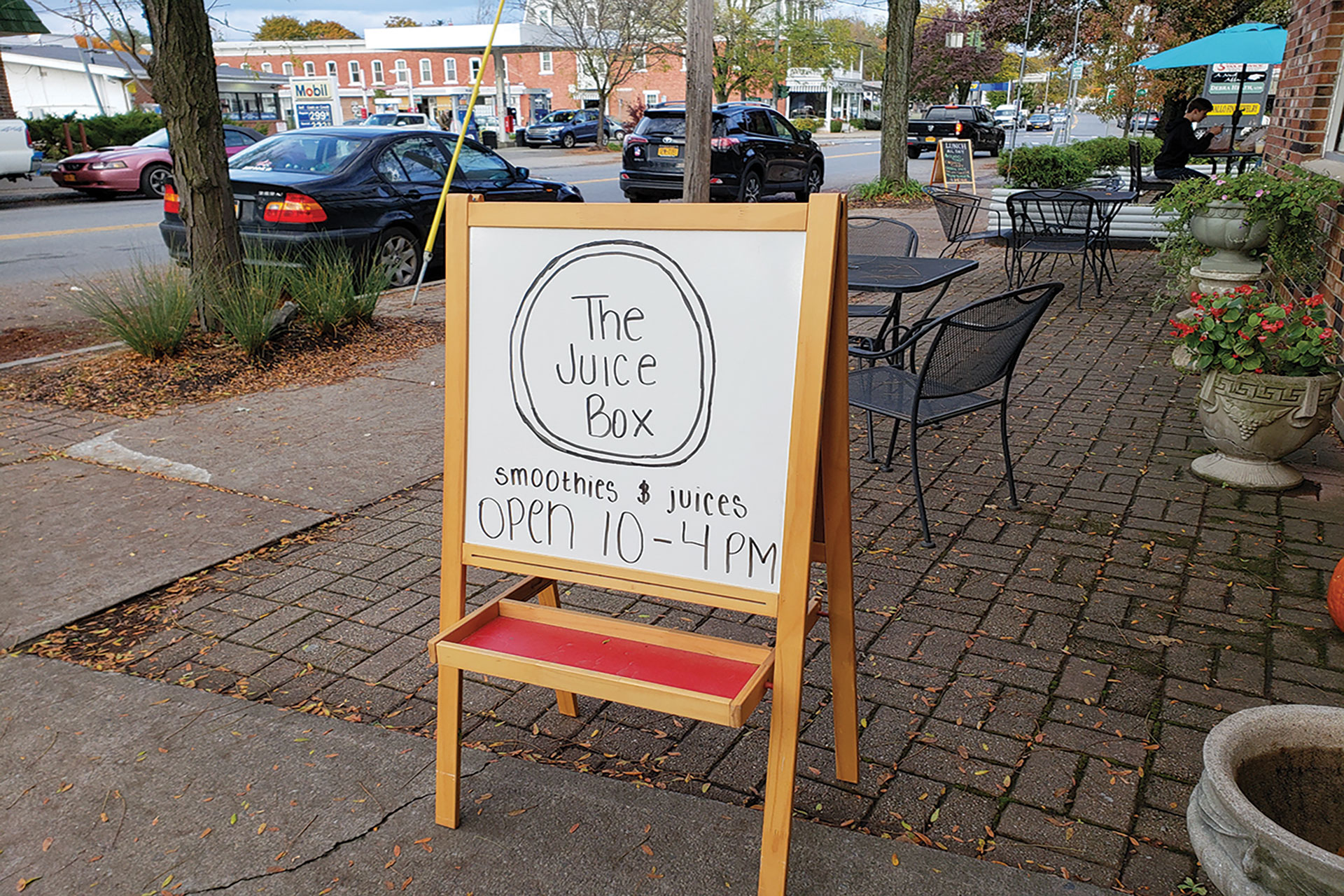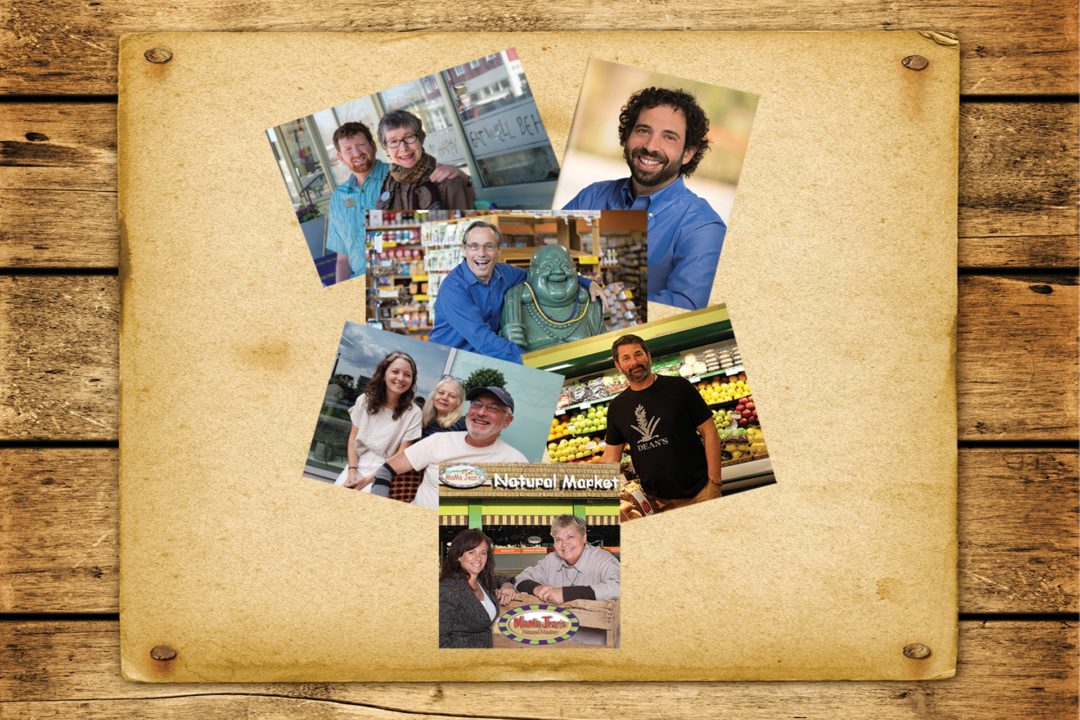That’s the differentiator.
Loving what they do and passionate to help others, independent natural products retailers did not get into the business to make a lot of money. Some did cash in nicely during the heyday of consolidation that culminated in the 2017 acquisition of Whole Foods Market by Amazon.com. Things could have gone either way after that.
It’s not getting any easier, but the independent store owner – the resilient one who is responsible for creating the natural products industry in the first place — has come through the year stronger than ever. That’s why we named him/her our 2018 Person of the Year.
 In the beginning WholeFoods Magazine president Howard Wainer shares some insight on how it all started. He says natural shops began as “diet stores” before they evolved into the largely successful market that we see today. “The independent retailer is incredibly strong and resilient especially in the 21st century,” he says. Of course, Amazon has become a strong force disrupting many industries, yet the independent retailers prevail through this period of online growth. It takes work.
In the beginning WholeFoods Magazine president Howard Wainer shares some insight on how it all started. He says natural shops began as “diet stores” before they evolved into the largely successful market that we see today. “The independent retailer is incredibly strong and resilient especially in the 21st century,” he says. Of course, Amazon has become a strong force disrupting many industries, yet the independent retailers prevail through this period of online growth. It takes work.“As Aristotle said, ‘The whole is greater than the sum of its parts.’ To survive in a post-Amazon world, independents must deliver excellence in three main areas; attentive, knowledgeable sales team, high-quality product selection, and clean and fresh presentation,” says WholeFoods merchandising editor Jay Jacobowitz, president of Retail Insights, Brattleboro, VT. “Doing one or two of these is not enough to overcome the ease of ordering online, the convenience of competitor locations, or the constant price pressure everywhere. But, with the right mix of people, product and place, independents can overcome these handicaps to create a true experience shoppers will want to return to again and again.”
What draws consumers towards the independent retailer? Retailers have the advantage of providing books, literature and education to consumers to personalize their shopping experience and make suggestions about new products they’ve discovered and like. It’s not just about the shopping experience. Customers also enjoy the bond and trust created with the staff.
The well-known Michael Kanter, chief visionary officer of Cambridge Naturals in Massachusetts, and an active board member with the Independent Natural Food Retailers Association (INFRA), says obviously they are locally-owned and independent as opposed to a chain or franchise. They make all the decisions in terms of marketing, where to expand, etc. On a more personal level, Kanter deeply treasures being so closely connected to the community. He feels Cambridge Naturals is an oasis for the community where they can help educate and combat the challenges and stress of everyday life, helping people with their health.
“On November 9 of 2016, anxious about the election, people wandered into our store just to ‘be’ – they just wanted to come in and hang out,” Kanter recalls. “Customers in your community know you are there for much more than just business, and that can have residual benefits.”
Undoubtedly there is a special relationship and trust that can’t be replicated with an online shopping service. Wainer agrees that education is the key to what saved the independent retailer.
“No matter what people throw at them, they are dedicated to serving their mission,” he says, going on to explain how the independent retailer really cares about the customer’s well-being. With Amazon and even natural retail chains, this isn’t always the case. “The independent retailer is very discerning for the most part on the products they’re putting on their shelves,” says Corinne Shindelar, INFRA president/CEO. “To be able to maintain the trust of their customer is huge. There’s a lot of conversation out there about greenwashing. A lot of customers shop independent retailers because they don’t have to worry about that.”
Not to mention, without these small independent natural retailers this industry wouldn’t exist. They were the foundation to the industry, leading to bigger companies and the spread of the natural products industry to a wider consumer base. Many thought that when Amazon acquired Whole Foods Market it would change the business model drastically for retailers to compete. We have seen changes in larger chain markets, but overall independent retailers have remained true to themselves, keeping consistent with their sales. It is telling that chain markets have implemented delivery services, meal kits, online shopping, store design changes, etc. while independent retailers have stuck to their original model. Rather than trying to compete, they have focused on their strengths.
Although many were anticipating a huge growth for Whole Foods Market after the acquisition, now, a little over a year later, it’s possible to put things into perspective. While it’s very early in the game, Amazon’s third quarter net sales from physical stores, mostly Whole Foods Market, dropped to $4.25 billion from $4.31 billion in the previous quarter. Their centralization of buying and focus on such efficiencies as cutting back on local marketing efforts, opened the door for independents to rally. Amazon issued a wake-up call to the entire grocery industry, which has responded in kind.
Despite larger stores implementing more innovative features, there is still something appealing about more intimate stores. As healthier options become more prevalent everywhere, some grocers are starting to scale down and switch up their layouts, inverting the traditional model. A good example of this is Sprouts Farmers Market, which is placing produce and fresh foods in middle aisles to make it easier to shop. This is a huge advantage independent retailers already have over larger-scale stores. “Hey, all these things that seem to be trendy and new right now, we’ve been doing all along,” Shindelar says.

Value Chain INFRA, whose mission is “to strengthen its members through collaboration to forge a sustainable future,” has an established set of values it expects of its membership: Collaboration. Innovation. Integrity. Transparency. Diversity. Engagement. Inspiration. Compassion.
The Minneapolis, MN-based buying cooperative negotiates with the big distributors — both KeHe and UNFI — and has been able to drive well over $2 to $3 million out of the aggregated book of business … just in the cost of goods, according to Shindelar. It accepts as members only private companies that are not more than 50% owned by venture capital or private equity. The primary business must be organic and natural products.
“If we think about it from a perspective of the independent’s place in the marketplace,“ Shindelar adds, “they continue to be extremely relevant because just by the nature of being independent they have a lot of flexibility in being fluid in terms of rapid changes in the marketplace.
“They are so much closer to their consumer,” she points out. “I think the Whole Foods activity of last year and the merger/acquisition was brilliant on Amazon’s part and at the same time, their relevancy in the natural channel changes with that. I thought it was probably a good thing because it took Whole Foods off the radar.
“It’s really fascinating right now to watch what’s happening in the customer’s understanding of how they want to shop grocery. It’s shifting and changing. Independents still have to figure out ways of operating on lower margins. At the same time,” she adds, “that’s not the same thing the shopper is focused on.
“The most significant change I saw this year was a much higher commitment of our independent retailers to make changes to their operations and a willingness to look at their sets, their categories, their pricing, and really sharpen their pencils in their presentation at store level to enhance that customer experience,” says Shindelar. “The other place where we’re really seeing a lot of energy being put is in refreshing and looking at peripheral departments and food service.
“Our members are interested in what’s next. How do we become great grocers? How do we tell our stories?” she adds. “There’s more focus on understanding their customer demographics and becoming a little bit more sophisticated in their strategy and in their marketplace. That’s been kind of exciting.”Brick-and-Mortar Is In Fashion
Consumers keep going back to brick-and-mortar even in an era of convenience and online shopping. As mentioned before, personal experiences trump clicking a button online, and we continue to see more loyalty to the independents. Big brands and chains are recognizing. Even Starbucks closed its online store this year to focus on brick-and-mortar shops. Customers enjoy being able to flag down a store associate and ask questions or get help — especially for categories like natural products where staff knowledge can be extremely valuable. Increasingly, digital retailers are seeing the benefits of establishing a presence in the real world. Brandless, the everything-is-$3 brand, opened a pop-up store in Manhattan recently as a place where consumers could sample products, share their opinions of different tastes and textures, and take selfies galore at a wall festooned with products.

Tina Sharkey, co-founder and CEO, disputed recent reports that Brandless is having trouble getting repeat business. In fact, she said, they discovered something unexpected in the year since launching. While their immediate focus was on millennials, the brand has proven popular with older customers.
We spoke with one grandmother during our visit to the West 14th Street pop-up store who confirmed this. She said she loves to buy Brandless for her grandson because she knows the cookies and snacks contain no artificial ingredients and the products are not oversized. The shampoo, she said, is the best she’s ever used.
Amazon, meanwhile, continues to experiment with physical store concepts. Its latest is called Amazon 4-star, and opened in SoHo. All the products – roughly 2,000 – in the 4,000-square-foot store are rated four stars or higher by customers, are best sellers, or are new and trending on the Amazon website. Touching and feeling does have its place.Education and Support Good retailers keep themselves educated on the trends in health and wellness. While manufacturers often supply their own trainings, organizations like INFRA and New Port Richey, FL-based SENPA (Source for Education, Natural Products and Advocacy) offer ways to keep up and learn from each other.
In addition to its annual gathering, and online educational efforts, INFRA recently added a wellness forum for its members, offering opportunities to compare notes and evaluate merchandising with peers from around the country.
SENPA conducts an annual educational road show in select cities and 94 retailers from 57 stores took part this year. About 350 independent retailers are expected to attend this year’s SOHO Expo in Orlando, FL.
“You can’t rest on your laurels, ever,” says Michael Kanter, whose daughter Emily now runs the day-to-day operation at Cambridge Naturals with her husband Caleb Dean. The Kanters recently took a risk and expanded into an emerging neighborhood called Boston Landing on the faith that if they built it, customers would come.
“It’s amazing the number of our stores that are doing expansions, adding locations,” Shindelar says.
“Tomorrow is always another show,” says the elder Kanter. “You start out with an agenda, then find out the refrigeration is broken. It does make you get more creative. You can’t just say, ‘Sorry. We’re not opening today because the refrigerator broke and two people called in sick.’ The show must go on. How are we going to put on a great show today, make people feel good, and keep coming back.” WFResilient in Red Hook The year 2017 was not an easy one for Michael Uccellini, owner of Red Hook Natural Foods and Market in New York’s Hudson Valley. He began to wind things down after the building’s owner announced plans to hike the rent by nearly a third on his long-term lease on South Broadway.
Then out of the blue he got a call asking if he wanted to buy the building, located in a prime spot in the commercial downtown of the mile-square village, within walking distance of shops and restaurants. Uccellini partnered with his “refrigerator guy” and closed on the real estate May 4, 2018.
Newly re-energized, Uccellini intends to spend the next year rebuilding Red Hook Natural. He’s ultimately looking for someone to partner or buy the retail business outright and let him stay on in some capacity. The natural foods and gourmet store has been in operation for 20 years – 12 of them at the current location, which has a total 3,400 sq. feet, about 2,400 used for selling space.
Uccellini lights up when customers come into the store. “It’s my social life,” says the 68-year-old, who started eating healthy as a 15-year-old growing up in Jersey City, N.J. “ I made all my own meals,” he recalls, often traveling into NYC’s Greenwich Village to shop at Integral Yoga Natural Foods on West 13th Street. “They sold nothing with sugar.”
While Red Hook Natural’s modest sales fall below the average-per-square-foot as calculated in the WholeFoods Magazine annual retailer survey, he has plans to grow and believes there’s potential because Red Hook is poised for a population spurt and he knows the business could be run more effectively. It’s got a built-in market — the community of Bard College, a private institution located a few miles down the road with a vibrant performing arts repertoire that attracts visitors from New York City in the summer.
 Currently, he employs two college students part-time. One works weekends and created a juice and smoothie bar that launched in September. The other lives in a vegetarian dorm and comes in twice a week to unload and pack deliveries from UNFI. Uccellini’s daughter, a local real estate agent, also helps out some days at the register.
Currently, he employs two college students part-time. One works weekends and created a juice and smoothie bar that launched in September. The other lives in a vegetarian dorm and comes in twice a week to unload and pack deliveries from UNFI. Uccellini’s daughter, a local real estate agent, also helps out some days at the register.Like many independents, Red Hook Natural is a linchpin to the community. According to Mayor Ed Blundell, a regular customer, the store sells 25% of the village’s garbage tags because it is open on weekends when town hall is closed and stays open later on Sunday garbage nights because “Michael knows people will need them.“ He doesn’t mark up the price. He figures it’s just good business and it gets people in the store.
While the produce is organic, it’s high quality and unique items that Uccellini focuses on. He stocks the highest quality organic chicken brand he can find, but also carries duck and duck fat. He offers an extensive gourmet section, candles, handmade furniture, cotton socks, and carries jewelry on consignment from a local artist.
Uccellini enthuses about things like the Simple Mills gluten-free crackers he recently started carrying that fly off the shelf. He keeps nuts refrigerated to ensure their freshness. He has sources for many things you can’t easily find anywhere else in the region.
“My secret weapon — don’t tell anyone about this” is fresh fish flown in on Fridays from the Gulf of Maine. “We buy the last catch. You can’t get fish any fresher than this unless you were sitting right there eating it after it was caught,” he beams. There’s a steady stream of customers who pre-order and he sells about 30 - 40 pounds per week.
The merchant is also a cheerleader for his supplier farms in the Hudson Valley and businesses in the neighborhood – especially the chiropractor across the street who refers customers.
An avid Bob Dylan fan – he’s seen the musician live more than 50 times – Uccellini heads to Maine once a month to relax and indulge his side business of antiquing. He displays some items in the store, along with a collection of Himalayan salt lamps. One December, the store sold 60 lamps in a week.
We agreed to check in with Red Hook Natural Foods and Market over the coming year to chronicle what Uccellini does to keep bringing it back to life. Check out WholeFoodsMagazine.com to watch the story unfold and add your own suggestions. – Laurie Petersen









